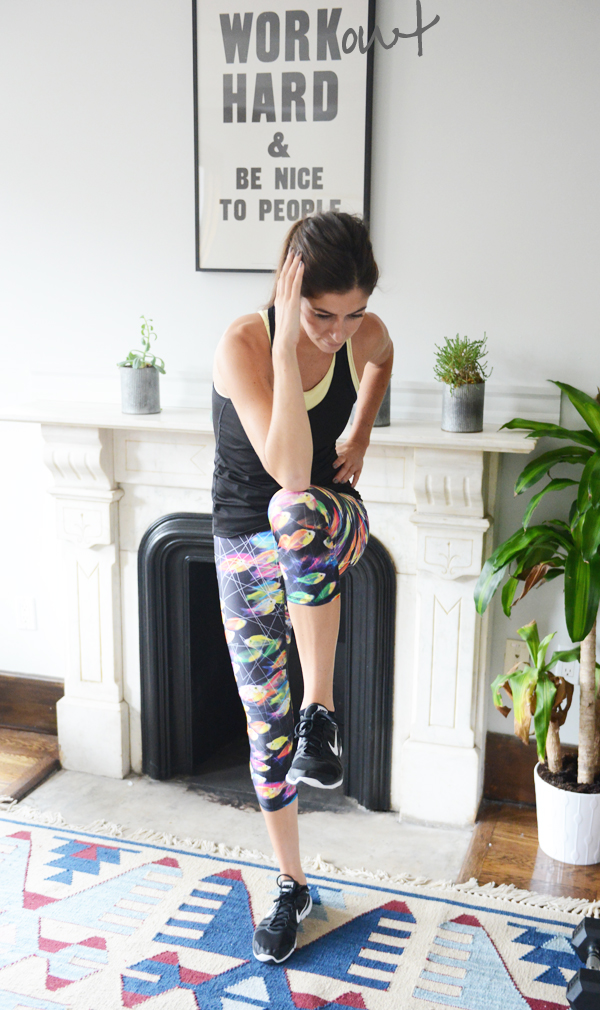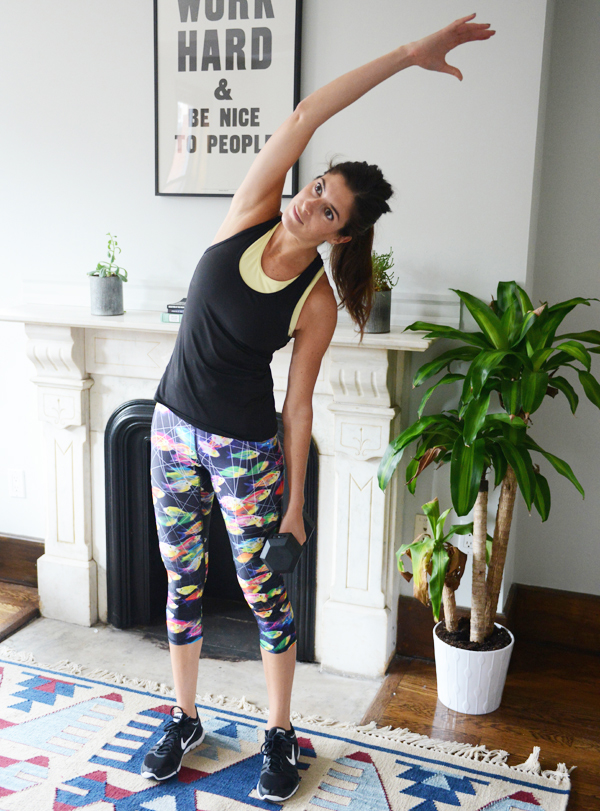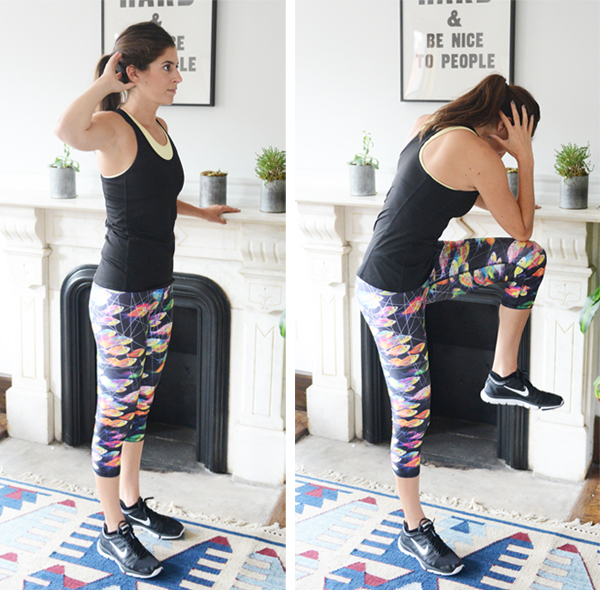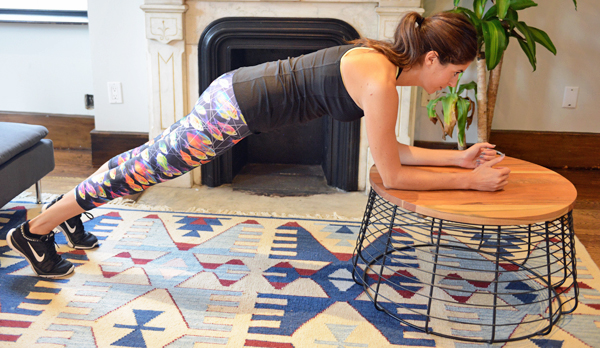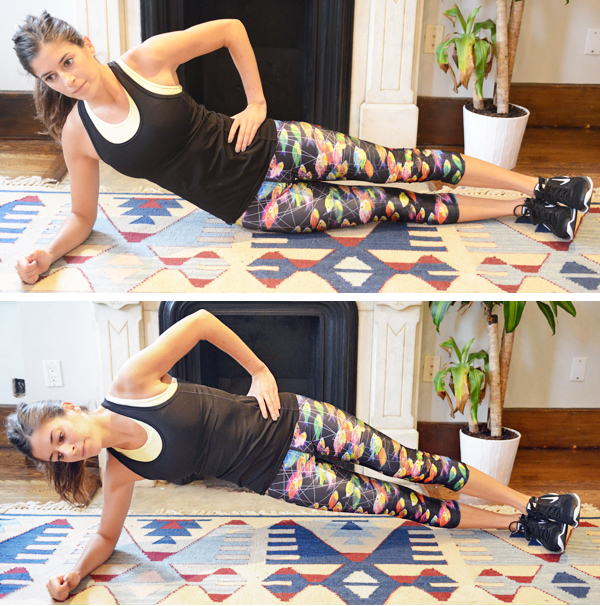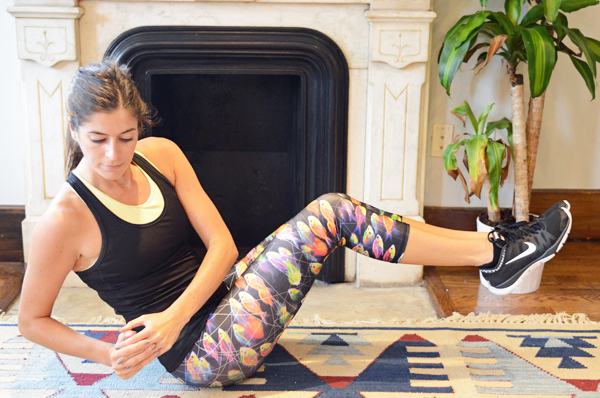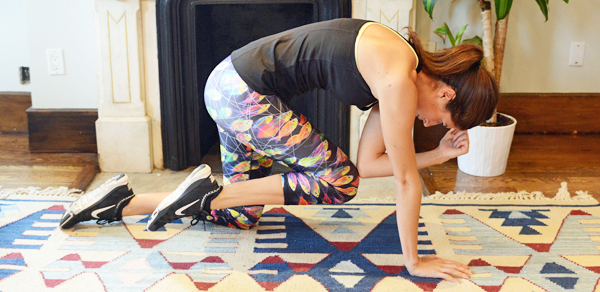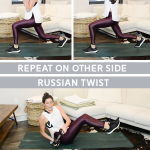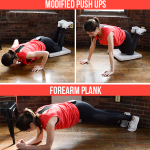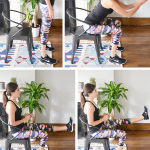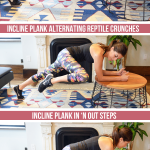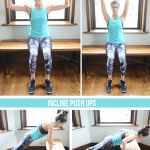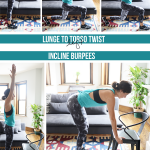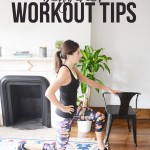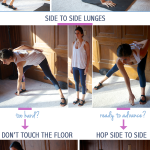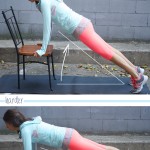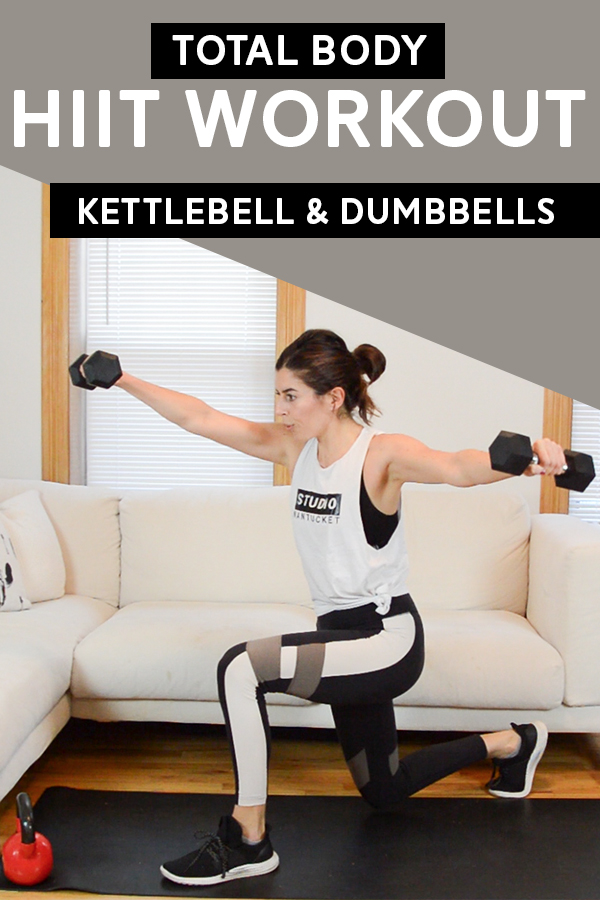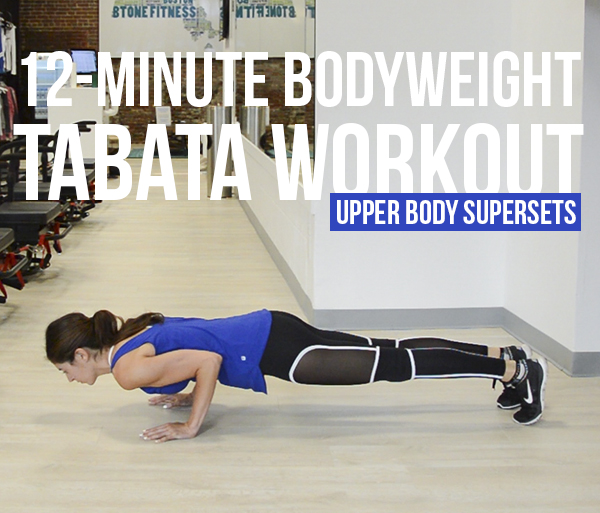
Today’s is upper-body focused, but you’ll get a good dose of core and cardio work as well.
12-Minute Bodyweight Tabata Workout Series: Upper Body (Chest, Arms, Core)
This workout is made up of three tabata supersets. For each tabata superset, set an interval timer for 8 rounds of 20 seconds of work and 10 seconds of rest. During the work intervals, you’ll alternate between the two exercises. In other words: 20 seconds Exercise 1 / 10 seconds rest / 20 seconds Exercise 2 / 10 seconds rest and so on. Rest as needed between tabata supersets, but try to limit it to 60 seconds if possible. 
Tabata Superset 1
Chest-to-Floor Burpees | Squat down, bringing your hands to the floor. As you do, hop your feet back out in a plank position, simultaneously lowering your chest to the floor with control (like a push up all the way down). Press yourself back up to straight arms, jumping your feet forward back to squat and then jumping straight up overhead.
Low Push Up Hold | For this, I want your hands close into the sides of your body (tricep push up). To get into the hold with proper alignment, start in a plank position with your hands stacked underneath your shoulders. From here, roll forward slightly onto your toes so that your hands are now a little further back, aligned with your ribs (this will allow you to bend elbows to 90 degrees). Keeping your elbows close to your body, lower down to a low push up position and hold there with your body hovering off the ground, abs held in tight.
Modify by holding the push up from your knees. Just make sure your hips are still lowered so that your butt isn’t sticking up into the air. Think of lowering from your knees rather than your hips to achieve this.
I’m going to call myself out a little on these as it’s a good demo of what not to do with form. Notice the difference in shoulder height between the first five seconds of the hold and the last five seconds: 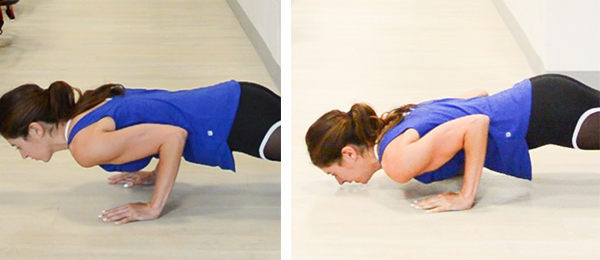
As my arms fatigue, I’m compensating by sinking into my shoulders. Don’t do this. If you notice your shoulders start to dip down (usually accompanied by your bum sticking up into the air), just modify the hold with proper form from your knees. 🙂
Tabata Superset 2
Triceps Dips | Use a chair, coffee table or bench for these. Start with your hands gripping the edge of a chair (bench, etc.) and your legs outstretched with your heels on the ground. Keeping your bum and back close to the edge of the chair, bend your elbows to 90 degrees as you lower your body towards the ground. Make sure your elbows don’t bow out in a diamond shape as you lower. From the bottom, press through your hands to straighten your arms back to the starting position. Imagine there’s a heavy weight sitting in your lap as you do these—don’t trust up through the hips and legs to rise up; use your arms! You’ll do three like this and on the fourth, lower down and hold at the bottom for about three seconds before starting back at the top. Beginners: To make these easier, bend your knees and keep your feet flat on the ground.
Alternating Crab Kicks with Triceps Pulse | Start in a crab position: feet on ground, knees bent, hands on ground underneath your shoulders, body facing upwards. Lift one foot into the air, straightening that leg. This is your starting position. From here, you’re going to alternate kicking one leg into the air and then the next, switching feet in midair so that there’s never more than one foot on the ground at a time. Your whole body will be working during these but focus on the softening of the elbows (like a triceps dip pulse) as you prep for the jump kick. Push through the hands, thrusting the pelvis upward as you straighten the arms and switch feet midair before landing.
Tabata Superset 3
Shoulder Tap Push Ups | Start in a plank position. I’m doing these with my hands slightly wider than shoulder-width apart because my triceps were fried after tabata set 2! 🙂 Keeping your hips level to the floor, tap your left shoulder with your right hand then the right shoulder with your left hand. Do a push up. To modify, perform from your knees.
Marching Plank | You’re essentially just moving from low plank to high plank, up and down. Starting in a forearm plank position, press up into a high plank, one hand at a time. Reverse the movement when you’re in a high plank, lowering onto one forearm at a time. Important form notes:
- Hands under shoulders, not in front. As you do these, think about keeping your shoulders stacked directly over whatever joint is on the floor (wrist in high plank, elbow in forearm plank). As you fatigue, the tendency is to have your hands far in front of your shoulders so that it’s easier to get back down to your forearms—don’t do this!
- Hold your hips level. Instead of shifting your body weight and rocking the hips to the forearm side as you move up and down, stabilize through the core and hold the hips level. To do this, the arms need to work harder, elbows bending deeper (like when you do a push up).
- Alternate your lead hand. Your body will want your dominate side to lead on this (from forearm plank: right hand presses up, left hand comes up, right forearm lowers down, left forearm comes down). Switch it up next time through so that your left side then leads the way.
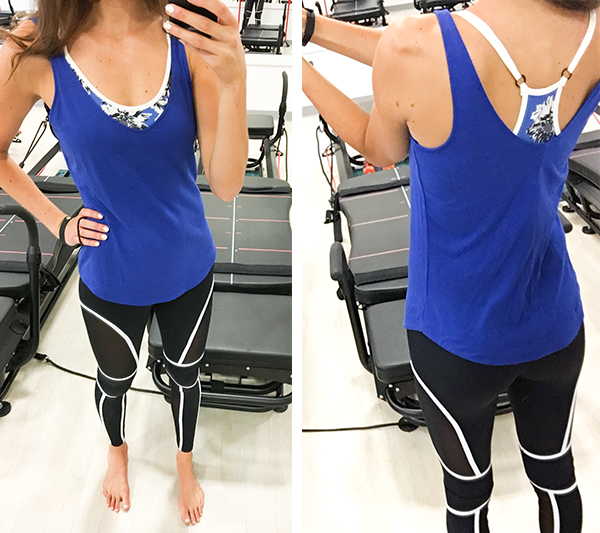
WEARING | leggings c/o Tully Lou // tank c/o Fabletics // bra c/o PRISM Sport (use code ACTPERRY to get 30% off)
Enjoy! Phew this one was tough for me. My upper body is definitely weaker than my low body and core so this was a challenge!

